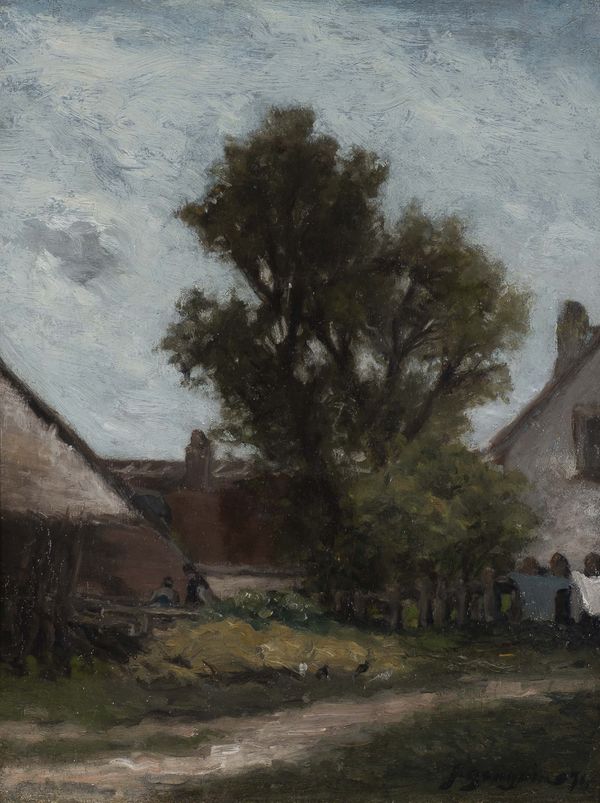Paul Gauguin
(French, 1848-1903)
Born in Paris, France in 1848, Paul Gauguin was the son of journalist Clovis Gauguin and Alina Maria Chazal. Before deciding to dedicate his life to painting, Gauguin joined the French navy, in which he served for two years. During his time as a marine he travelled to the Caribbean but in 1871 he returned to Paris, where over a period of eleven years, he became a successful stockbroker. It was during this time when he began his dealing in the art market. He began painting in his spare time, embracing the Parisian world of the Impressionists (and exhibiting with the movement in 1879, 1881 and 1882), and befriending Camille Pissarro, whose work was to resonate with him and influence this early stage in his practice. However, in 1882 the Paris stock market crashed and Gauguin's earnings deteriorated, resulting in his decision to pursue painting full-time.
Gauguin was to become one of the leading luminaries of the Post-Impressionist movement, creating a dense and exotic myth reflected in his influential and experimental paintings. The mythical roots of his later work can be traced as far back as his infancy; having moved to Peru with his family as an 18 month old child, he was to remain there for four years before the family returned to France. His colourful early life continued when he joined the French merchant marines aged 17. Having married Mette-Sophie Gad in 1873, the couple were to have five children together, eventually moving to Copenhagen around 1884. In 1885 there was a dramatic shift in Gauguin's personal life; his marriage failing, he returned to Paris to devote himself to painting. However the artist still yearned for travel and the colours and intensity of distant, tropical countries; in 1887 he travelled to Martinique, where his earlier Impressionist paintwork fused with the bright primary colours of the sundrenched island. Despite the relatively small amount of works completed during this stay, they exude the immediacy and saturation that was to recur in his later periods. The legendary, infamous few weeks of 1888 in which Gauguin and van Gogh shared the Yellow House in Arles together have become a seminal part of both art history, the evolution of painting and the lore surrounding the artist himself.
Gauguin's work has been exhibited extensively in the United States, Europe and Asia. The long list of prestigious galleries and museums include Tate Modern, London, The National Gallery, London, The Metropolitan Museum of Art, New York and Mitsubishi Ichigokan Museum, Tokyo, Japan. Gauguin's retrospective exhibitions at the Salon d'Automne in Paris in 1903 and a more extensive one in 1906 had strong influence on the French avant-garde movement and specifically Pablo Picasso's paintings. In 1906, Picasso created paintings depicting oversized nude women and monumental sculptural figures that recalled the work of Paul Gauguin and demonstrated Picasso's interest in primitive art. The power evoked by Gauguin's work led directly to creation of Picasso's Les Demoiselles d'Avignon in 1907.

